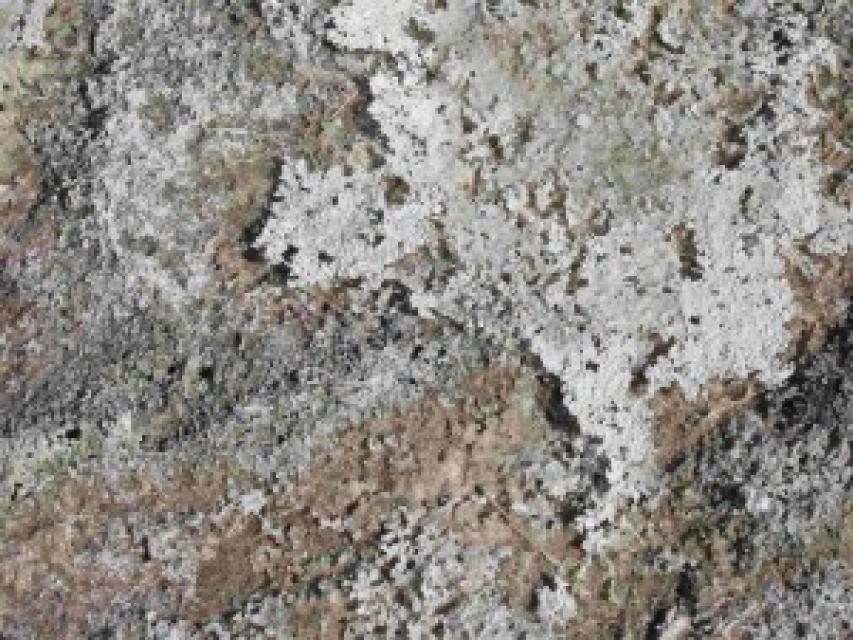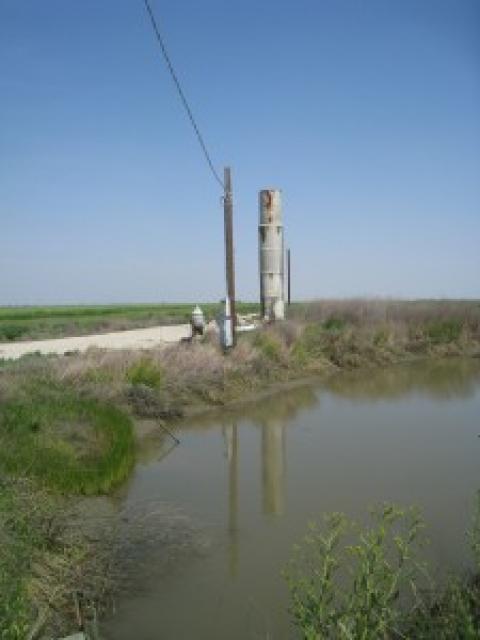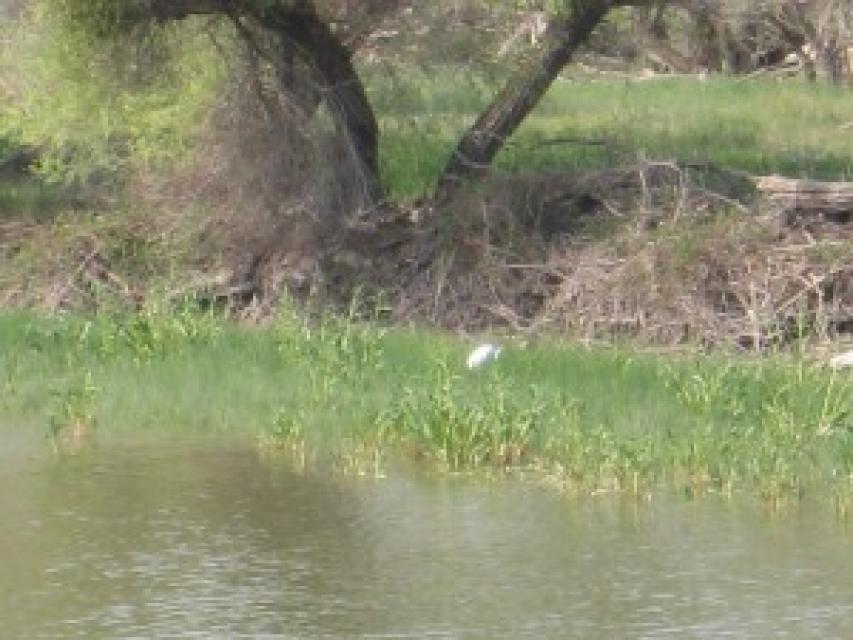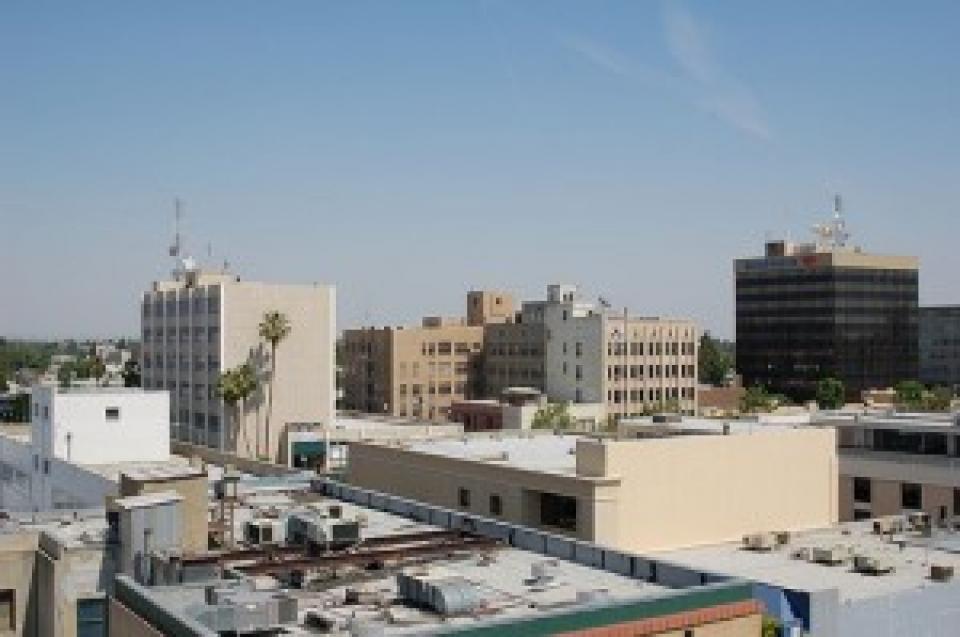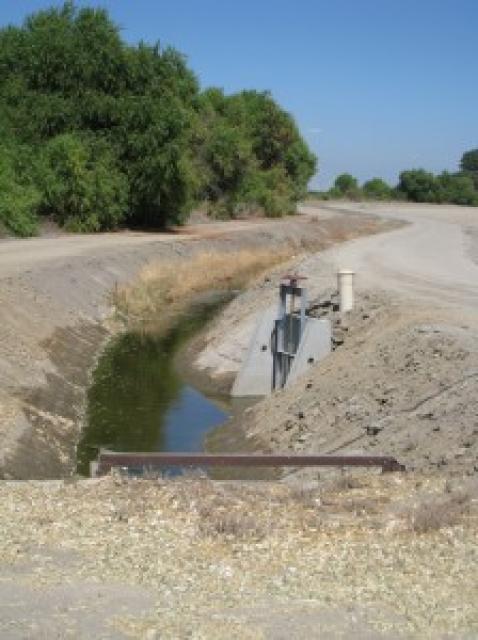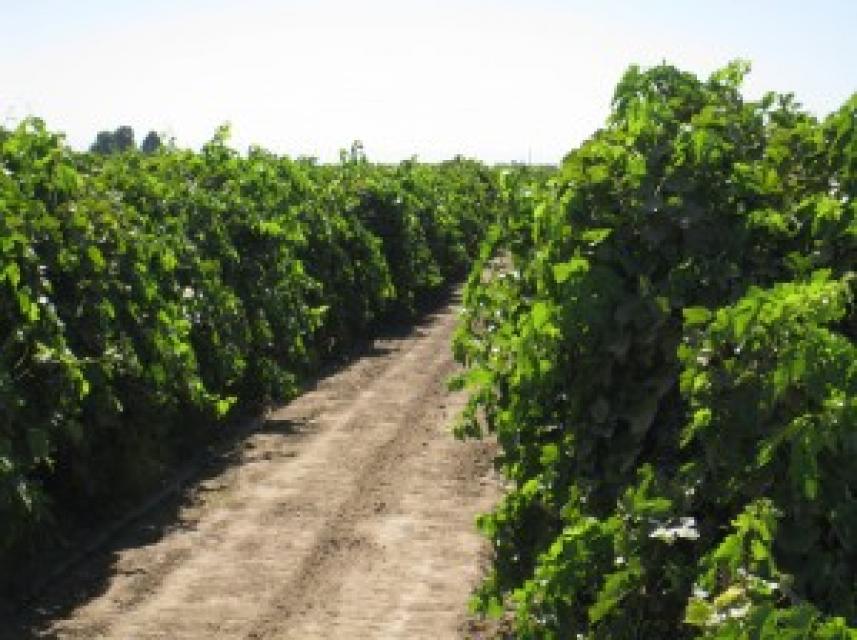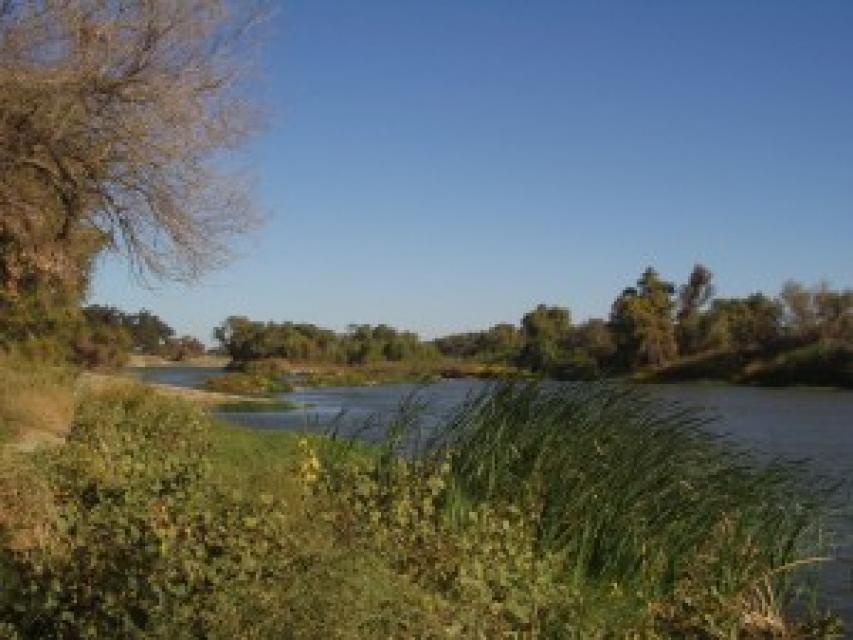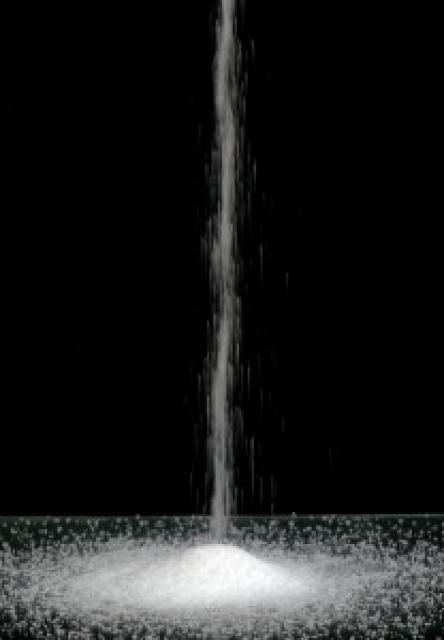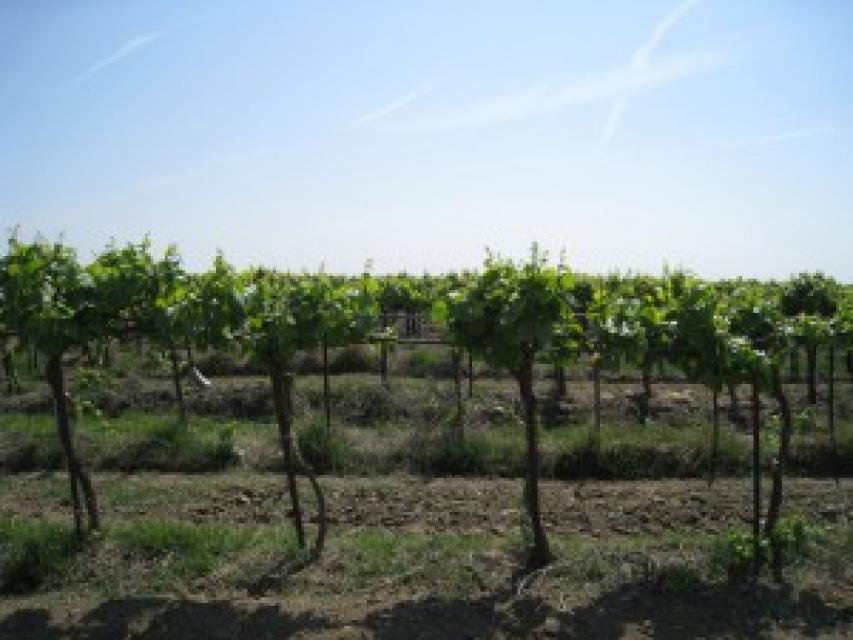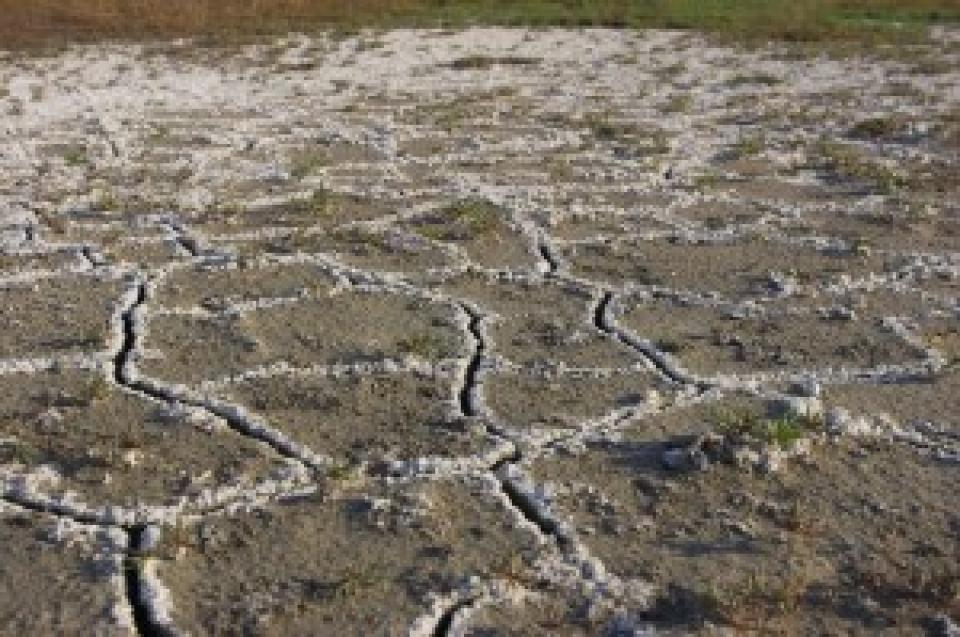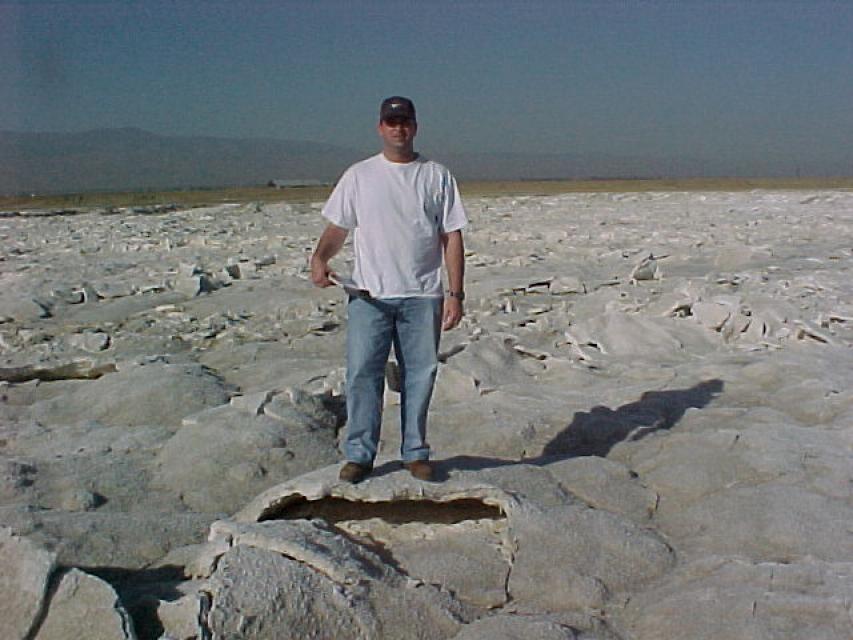Salinity in the Central Valley: A Critical Problem
Salt. In the right amount, it’s a gift from nature. Our bodies need some salt to absorb water and, basically, to survive. But any doctor will tell you, if you take in too much salt, you’ll start to have health problems. A similar negative effect is happening in California and is particularly obvious in the Central Valley.
Excess salinity poses a growing threat to food production, drinking water quality and public health. Salts increase the cost of urban drinking water and wastewater treatment, which are paid for by residents and businesses.
Excess salinity – that which is greater than the standard set to protect beneficial uses – poses a growing threat to food production and drinking water quality. Salts increase the cost of urban drinking water and wastewater treatment, which are paid for by residents and businesses.
Unlike most coastal communities where salt has direct outlets to the ocean, in parts of the Central Valley there’s inadequate outlets, or even no way out, and salt accumulates. That is dire news for the crops. The excess salinity squeezes the productive life out of some of the most fertile soils in the world. On the municipal side, communities are spending increasing amounts of money to comply with water quality discharge standards designed to limit salinity.
Increasing salinity is likely the largest long-term chronic water quality impairment to surface and groundwater in the Central Valley. Salinity, including nitrate, from past and current sources impair beneficial uses of waters throughout the Valley landscape and result in pollution of drinking water sources for some communities in the Central Valley. While there are some salinity regulatory controls in place, it is generally agreed that a much more comprehensive approach is needed, one that involves the many users of Central Valley waters. The implications of failing to solve the problem means that California will lose significant portions of prime agricultural land that provides so much food for the state, the nation and throughout the world.
In a March 2009 study, The Economic Impacts of Central Valley Salinity, the University of California, Davis reported that if salinity increases at the current rate until 2030, the direct annual costs will range from $1 billion to $1.5 billion, with income impacts to the Central Valley between $1.2 billion and $2.2 billion.
“In terms of job losses the increase in salinity by 2030 could cost the Central Valley economy 27,000 to 53,000 jobs,\” the report says. “In short, the problem is substantial and growing steadily. [Central Valley grapevines #4 - smaller] The magnitude of the economic and employment losses justifies a more detailed study of remedial action and correction policies.
The billion-dollar question is what to do with all that salt. Truck it out? Build a massive drain to the ocean? Allow valuable farmland to transition into a giant salinity dumping grounds? Wherever the solution lies, one thing is certain. It’s going to be increasingly expensive but necessary and ultimately unavoidable.
The Salt of the Earth
Salts are combinations of common earth elements and compounds. Chloride and sodium ions, the two components of common table salt, are necessary for the survival of all known living organisms.
The water cycle starts when water from the earth’s surface evaporates and rises into the air where it cools and condenses, forming clouds. Those clouds, of course, bring precious freshwater rain to the land. And when that rainwater hits the ground, it percolates down, picking up naturally occurring salts and minerals in the soil, and leaching them into the groundwater and/or surface waters.
Streams flow into the Sacramento River in the north and the San Joaquin River in the south. Those freshwater rivers flow into an estuarine Delta which by itself has always been subject to saltwater intrusion from the ocean tides. Fresh water from the rivers then becomes increasingly salty. The federal and state governments have operated water supply projects for decades in the Sacramento-San Joaquin Delta, pumping that water inland to provide drinking and irrigation water for many parts of California and the Central Valley.
Human use is part of the salt cycle, too. Every time water is used to cook, clean, cool, or provide sanitary services in homes, businesses and industries, salt is added to or concentrated in our wastewater. Every time a farmer irrigates a crop, salt ends up concentrating in the runoff and groundwater. Urban and agricultural wastewater is applied back onto the land or discharged into rivers : contributing and concentrating even more salt within the water cycle.
Some farmers are taking the initiative and pursuing innovative management and treatment techniques and adapting by studying salt-tolerant crops. Cities are educating residents about their role in the problem and what can be done to reduce the amount of salt they contribute into water. Ultimately, even normal use of water by farmers and residents contributes to the problem. As the population increases in the Central Valley, one area of concern is if additional residents will exacerbate the problem.
Sufficiently diluted, salts are usually harmless for most water uses and are necessary for plant growth. Excessive amounts of dissolved salts, however, are detrimental to practically all water uses. The San Joaquin region and larger Central Valley were once part of the Pacific Ocean, and later a sea, before the now-inland area split from the coast. That geologic history helped leave the region naturally rich in salt and trace minerals including selenium. Common in energy drinks and used in copy machines and in the manufacture of semiconductor products, selenium is safe and necessary in low doses but at high levels can be toxic to waterfowl and other animals.
In addition to salts that are brought in with imported water, salts, including nitrate, arrive in fertilizers, biosolids and compost, water softener salts, detergents and other salt-containing items used on a regular basis. Some Valley soils are naturally high in salts.
Precipitation over the millennia and irrigation over the past century has caused some of these naturally-occurring salts to be mobilized or released from parent rocks and soil to enter surface water and groundwater. The addition of salts, including nitrate, is only part of the picture, though. Evaporation and consumptive use both result in salt concentration where water being removed and salts being left behind.
Nitrate
Nitrate, the oxidized form of dissolved nitrogen, is a necessary nutrient for plants, but at high concentrations is a threat to human health and the environment. It is highly soluble, readily leaches from soils and is mobile in groundwater. As such, it is one of the most common groundwater contaminants. In California, about 10 percent of the public wells exceed the state’s maximum contaminant level (MCL) regulatory standard for nitrate and must be treated or blended with high-quality water. In some areas of California, more than one-third of domestic wells may exceed the nitrate MCL.
Concentrations of nitrate exceeding 20 milligrams per liter (mg/L) in drinking water can cause health problems, especially in infants. Other effects are hypertension, central nervous system [California dairy cows #4 07-2008] birth defects, certain cancers, non-Hodgkin’s lymphoma and diabetes. The federal drinking water standard for nitrate is 10 mg/L.
Nitrate contamination occurs in surface and groundwater. Unfortunately, the means by which is contributed to groundwater : animal operations, crop fertilization, wastewater treatment discharge, septic systems : are ongoing and economically important. Nitrate is expensive to remove from drinking water supplies, especially in public and private systems that rely on untreated groundwater and do not have the necessary water treatment infrastructure.
Agriculture is the major water-using industry in the Central Valley and it is also the sector where problem salinity is often first observed. Other uses of water that can be affected when salinity, including nitrate, increases beyond acceptable levels include municipal use, environmental use and industrial use. High salt concentrations can impact crop growth, cause health and taste problems for municipal users, and decrease the life of water delivery, conveyance and treatment systems both at the community level and in individual homes. The environment is also vulnerable to salt impacts. Thousands of acres of land in portions of the southern San Joaquin Valley are no longer farmable due to salinity buildup.
Salt in the Basins
The Central Valley Region is divided into three basins: the Sacramento River Basin, the San Joaquin River Basin, and the Tulare Lake Basin. The Sacramento Basin generally receives enough precipitation to dilute salinity. There are localized areas where groundwater is at risk from specific saline discharges, but viewed as a whole, the basin does not experience problem salinity. However, a portion of the salts originating in the Sacramento Basin reach the Delta pumps of the state and federal water projects and contribute to salinity problems in the San Joaquin Valley and other regions of the State.
The San Joaquin Basin receives considerably less rainfall than the Sacramento Basin. Supplemental irrigation is needed to support the multi-billion dollar agricultural industry that the Basin is famous for. Irrigation water is pulled in from the Delta and consists of a combination of Sacramento and San Joaquin River flows with their respective salt loads. Some of the imported, concentrated or mobilized salt discharges back to the Delta and out to the ocean, but annually the state and federal pumps bring in more salt than is discharged to any natural outlets, resulting in a chronic salt imbalance in the basin.
The Tulare Lake Basin is also home to a world-renowned agricultural economy supported in part by water deliveries from the Delta. Except in very wet years, the basin has no natural discharge outlet so imported, concentrated and mobilized salts continue to build up in the groundwater unless captured and sequestered (a temporary storage solution).
Water supplied by the federal Central Valley Project (CVP) and the State Water Project (SWP) brings tons of salt : literally. Each day those supplies transport the equivalent of about 40 railroad cars of salt for the western San Joaquin Valley, whose dense clay layers keep irrigation water from permeating into the ground below. Without adequate drainage, officials say, salts accumulate in the soil and a disaster looms. Researchers at the University of California, Davis, concluded that increased irrigation in the Valley raised the water table in the 1970s, drawing up some salts that had been leached downward.
Salinity is a shared problem. “Every time a farmer irrigates a field, every time a managed wetland is flooded, every time an industrial facility conducts some process requiring water, and every time you or I take a shower, we contribute to the salinity problem,” notes the 2006 report, Salinity in the Central Valley, by the California Environmental Protection Agency and Central Valley Regional Water Quality Control Board (Central Valley Board). “The water we use and release has a higher salinity concentration than what we started with.
There are other lifestyle and economic effects, too. The salinity problem endangers the economic vitality of the Central Valley and limits business and residential growth. It increases the costs of urban or rural drinking water and wastewater treatment. It also significantly limits water resource management options, especially during droughts.
Parts of the Central Valley feature poorly drained and naturally saline soils. When these soils are irrigated, salts accumulate in the shallow groundwater and rise into the root zone. Without adequate drainage, fields become waterlogged. Think of it as a flower pot without a hole for drainage. Without the hole, the salts and water continue to build up with nowhere to go. Compounding the problem is the fact there is always some salinity in water supplies used to irrigate fields. Some water evaporates from the surface of the field, leaving salts behind. The rest of the water penetrates the soil where most of it is taken up by crop roots and is transpired through the plant leaves, again leaving concentrated salts behind. Without enough rainfall, or dedicated irrigation leaching water sufficient to transport these salts to the ocean, they will inevitably continue to accumulate in those parts of the valley.
The Urban Factor
The entire Central Valley, and especially in the San Joaquin Valley, has experienced great population growth, and will continue growth in the future. The increasing number of people living and working in the area places demands on water supply and for clean drinking water.
Experts have crunched the numbers, and they say cities in the San Joaquin Valley alone will need to develop an extra 800,000 acre-feet of water per year to meet the demands of the growing population. For perspective, one acre-foot is enough to cover a football field in a foot of water. That, times 800,000 is a lot of low-saline drinking water. If the groundwater becomes more saline in urban areas, it could put constraints or restrictions on the use of the already- stressed groundwater to support population growth.
Finding a viable solution is nothing new. Back in the 1930s the plan was to build a series of pipelines and canals to send the saltwater out to the ocean. Later, the U.S. Department of Interior teamed with the state of California to design and partially construct an open surface canal, the “San Luis Drain,\” to send untreated drainage straight to the Delta and out to the ocean.
Crews got as far as 85 miles: to the edge of the San Joaquin River : when disagreements over funding and environmental opposition brought construction to a halt. In 1975 what was supposed to be the “Valley Master Drain\” was terminated in Merced County at a reservoir known as Kesterson. The reservoir was not designed to be a terminus reservoir but to be a regulation reservoir to time the flows of drainage into the Delta to coincide with the ocean tides for disposal.
When the untreated agricultural drainage was funneled in to the Kesterson Reservoir, it brought selenium, which started as a soil mineral in the coastal mountains, and created an environmental disaster. To thousands of migrating waterfowl, selenium was toxic. The reservoir was eventually filled in with dirt.
Since then, farmers have continued to irrigate. Crops have continued to concentrate salt into the soil. And without the promised master drain, famers and landowners have been embroiled with the federal government in a battle that continues today. As a result, the main problem of salinity remains unsolved.
What’s Being Done
The Central Valley Water Board and others are working to develop a salinity and nutrient management plan for the Central Valley. According to the Board, some of the “critical components\” of the plan include identifying ongoing management strategies, reasonable but measurable goals and objectives for salt or nitrates and establishing limits or restrictions to ensure the objectives are met. The plan aims to control nitrate, calcium, sodium, magnesium, potassium, bicarbonate, sulfate and/or chloride. “In the right amounts, some of these materials are considered essential for health, but in excessive amounts they cause problems,\” states the Central Valley Salinity Coalition, a non-profit group working to better manage salts in the Central Valley. The plan would also fulfill the State Water Board’s goal for every region to develop a salt/nutrient plan by 2014.
CV-Salts
CV-SALTS (Central Valley Salinity Alternatives for Long-Term Sustainability) is a strategic initiative to address salinity, including nitrates, throughout the region in a comprehensive, consistent and sustainable manner. The Central Valley Regional Water Board and the State Water Board in cooperation with stakeholders and the Central Valley Salinity Coalition see CV-SALTS as a platform to review and update the Water Quality Control Plans for the Sacramento and [Kings River #2 04-2008] San Joaquin River Basins, the Tulare Lake Basin and the Delta Plan for salinity management.
The effort engages regional collaborations for more efficient and effective salinity and nutrient management from regulated discharges and actions beyond the jurisdiction of the Boards. Examples of regional collaborative salinity and nutrient management projects might include: regional salt storage or conveyance systems, treatment facilities, Real-Time Management, water or salt trading, or other actions that the Boards are unable to require but which could facilitate sustainable salinity management in the region.
CV-Salts: The Take Home Message
Those working on a long-term salinity management want people to know the seriousness of the problem. Unmanaged, salt and nitrate discharges impair surface and groundwater for all uses, endangering the economic vitality of the Central Valley and hindering business and residential growth and development. According to the coalition, “the adverse economic impact due to the importation, concentration and mobilization of millions of tons of salt annually will only worsen in future without development of a comprehensive salinity management policy.
Without a policy agreed upon by diverse interests, the task ultimately falls back to government regulators, who will develop salinity control measures that could make compliance more difficult for irrigators, drinking water suppliers and export/banking agencies. According to the coalition, some of the more important issues to be addressed are:
Accumulating salts can reduce productivity or ruin agricultural
lands, reducing profitability of farms and related businesses.
Concentrated salts reduce the useful life of water pipes,
appliances and equipment.
A comprehensive salinity management policy is necessary to
address salinity issues that adversely impact water within the
Central Valley and water exported beyond the valley.
Recycled water development and conservation efforts are important
water supply strategies that rely on a comprehensive salinity
management plan.
Click here to visit the Central Valley Salinity Coalition and CV-SALTS online.
New Focus
The salt problem is a complicated and crucial issue and one that is difficult to resolve. The current debate is whether to pursue so-called “in-valley” or “out-of-valley” solutions. An “out-of-valley” solution would be something like a brine line : another attempt at a master drain : using modern technology to remove contaminants of concern before it reaches the ocean. As “in-valley” solutions, some of the most advanced salt management techniques are being employed to manage salt in the Tulare Lake Basin and other areas in the San Joaquin Valley. These include: on-farm water reuse and salt precipitation, reverse osmosis concentration and truck disposal to existing ocean outfalls, brine reinjection into oil extraction areas, water management and source water replacement, source control for salts going into domestic sewers and evaporation ponds.
Reverse osmosis is hailed as one of the most effective solutions. Some desalination plants are being built near coastal California to make ocean water drinkable. The downside is the technology is costly and requires an extraordinary amount of energy to function. Unless they are sited near the ocean, brine handling is extremely expensive.
Focusing on urban water usage, enforcement efforts are being stepped up on wastewater discharge standards. As a result, cities throughout the valley are looking more closely at their selection of a quality source for their water and also what consumers do to add salt to their waste-streams. Educational outreach is taking the message to the people in hopes that residents will learn how to reduce their direct impacts on the salinity problem.
Out in the fields, some farmers are taking matters into their own hands with innovative adaptation strategies, such as switching to salt-tolerant crops like pistachios and Jose Tall Wheat Grass for cattle feed. Others are finding ways to filter and drain salty water from their fields. The bottom line is life is not as it used to be in the Central Valley. Practices and water use in the Central Valley are changing and will continue to adapt in order to retain its rich agricultural legacy.
Those involved agree the final solution is to develop a cooperative, large-scale, multi-solution salt management plan for the Central Valley, which will maximize the use of its water resource, continue to grow smartly and maintain the business and agricultural economy that is vital to the state. Most plans envisioned will take more than 20 years to implement and will cost billions of dollars. By working together, water agencies and stakeholders can come up with innovative ways to solve the problem through the most cost-effective means.
That does not mean the problem of salinity is any less severe. Officials describe salinity’s cumulative impacts as slow and chronic. The problem can be solved, but the challenges lie in the cost and what changes will have to be made to achieve the desired results.
In 1973, Warren A. Hall, acting director of the Department of Interior’s Water Resources Institute, aptly described the scope of the salinity problem. “Salt problems are particularly insidious,\” he said. “They do not come charging at you with trumpets blowing and battle flags flying, a sight to set stirring the hearts of activists in any century. Rather, they slip in almost unnoticed. Time is of no concern, for they are supremely confident of their ultimate victory. History is on their side, as are the laws of physics, chemistry and biology. They have quietly destroyed, without fuss of fanfare, more civilizations than all the mighty armies of the world.
Actions You Can Take to Reduce Salt Impacts
-
Use less or low salt detergents and
products
Research shows that significant salt comes from our household detergents and cleaners; consider using liquid and low salt products. -
Reduce dietary salt
Salt used in cooking finds its way back into the environment. Not only does salt impact the water system of the Central Valley, but according to the American Heart Association salt can increase high blood pressure. Processed foods can contain added salt. For tips see http://www.americanheart.org/presenter.jhtmlidentifier=336 -
Conserve water, water saved is available to better
manage salts
All water has some salt; every use adds salt to the environment. Consider energy efficiency and water conservation in home purchasing, remodeling or landscaping. Become involved and support local water and wastewater supplier’s conservation and salinity management efforts. -
Water softener users should utilize only the highest
efficiency systems
Ask a state licensed water conditioning professional if they can help reduce salt usage and discharge to the sewer. Older or out of adjustment systems waste salt which may be released to the environment. -
Limit use of kitchen garbage disposals
Composting or disposal in the normal trash can reduce the salt released to the environment from our food preparation. -
Conserve energy: electricity, oil and biofuel
production concentrate salts
Because fossil fuel electrical generation, oil and biofuel production concentrate salts any energy saved reduces salt load and saves money.





